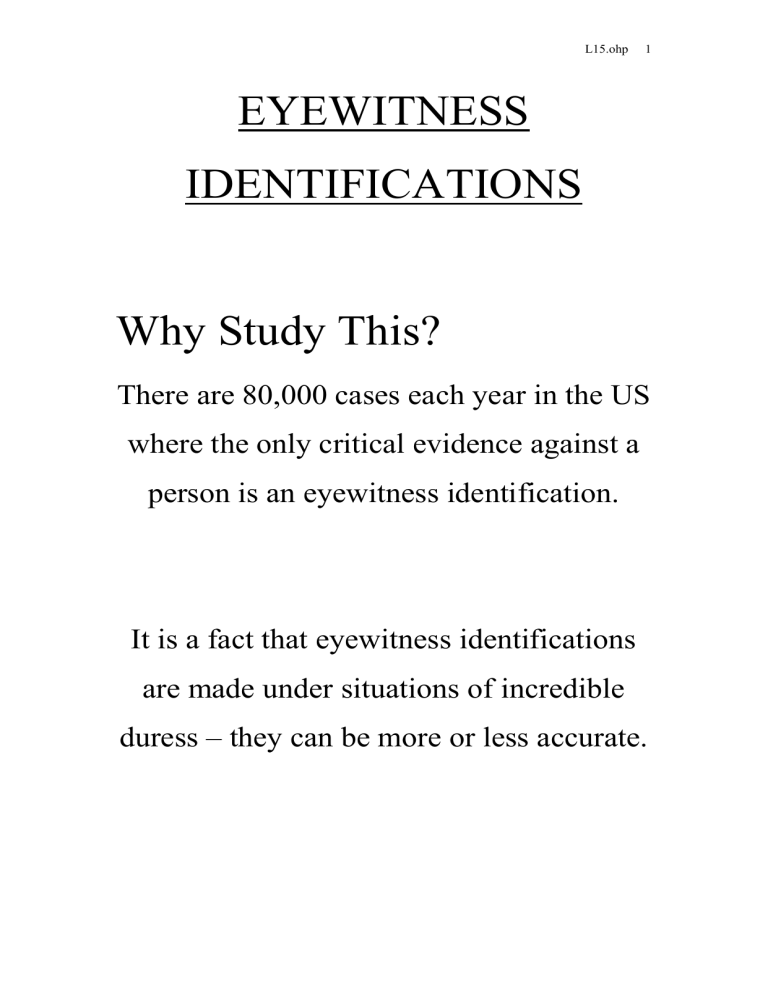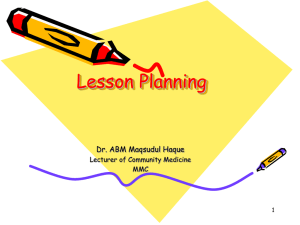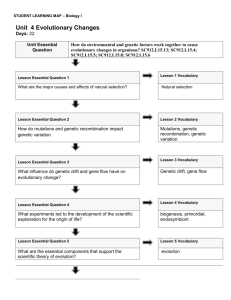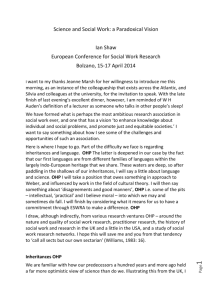overheads (on separate A4 sheets)

L15.ohp 1
EYEWITNESS
IDENTIFICATIONS
Why Study This?
There are 80,000 cases each year in the US where the only critical evidence against a person is an eyewitness identification.
It is a fact that eyewitness identifications are made under situations of incredible duress – they can be more or less accurate.
L15.ohp 2
STAGES IN THE
IDENTIFICATION PROCEDURE
1.
Verbal Description
2.
Police Sketch/Composite Image
3.
Mugshot Identification
4.
Lineup/ Identification Parade
Value versus pitfall
L15.ohp 3
Step 1:
VERBAL DESCRIPTION
determines direction of investigation
BUT: A host of factors can influence its accuracy:
delay between event and description
reconstructive
bias from expectations/stereotypes
(MacLin, Malpass & Herrera, 2000)
limited by language –verbal overshadowing
Description will undoubtedly lose something and may even insert things.
L15.ohp 4
Step 2:
POLICE SKETCH
guides further investigations
acts as a visual prompt for the public
visual cue to refine the verbal description
BUT: Errors can be introduced
subtle discriminations required
bias of operator/artist
reinforcement of initial errors
The sketch may bear a striking resemblance to a person with two eyes, two ears, a nose and a mouth.
L15.ohp 5
Step 3:
MUGSHOT IDENTIFICATION
recognition is easier than recall
visual over verbal method of ID
BUT:
mugshots may not be current
viewing conditions may interfere
source monitoring errors –bystander effect
social pressure to choose
High likelihood of mistaken identification
L15.ohp 6
Step 4:
POLICE LINEUP
Based on sound principles:
correct identification of the suspect- strengthens prosecution
identification of non-suspect – eliminates the suspect, examine the alternative, question validity of witness
No identification – eliminate the suspect/memory too weak or witness shows a conservative bias against making a mistake.
Good test of police hypothesis and witness credibility
L15.ohp 7
POLICE LINEUP – A
PROBLEMATIC PROCEDURE
Social Pressure to choose
Source monitoring error – recognising from scene/mugshots
Suspect stands out
(Lindsay & Wells, 1980)
Functional size of lineup is small
(Malpass & Lindsay, 1999)
Relative vs Absolute strategy
Recommendations:
UK - The Devlin Report (1976)
US – American Psychology and Law
Society (APLS) Wells et al. (1998).
L15.ohp 8
REVISIONS TO
IDENTIFICATION PROCEDURES
1.
Non-biased instructions
Malpass & Devine, 1981, Steblay, 1997
2.
Blind procedure –confidence malleability
Luus & Wells, 1994
3.
Remove mugshot stage
Devlin, 1976
4.
Fair lineup – suspect does not stand out, fillers fit witness description
Luus & Wells, 1991
5.
Sequential over simultaneous lineup
Lindsay & Wells, 1985
L15.ohp 9
SUMMARY
Eyewitness accuracy can be boosted by:
- Careful use of verbal descriptions
- No/limited use of mugshots
- Revised procedures for lineups
Blind
Fair
Non-biased instructions
Sequential presentation
Simultaneous correct
Sequential correct
T.present
T.absent
61%
39%
50%
78%
L15.ohp 10



